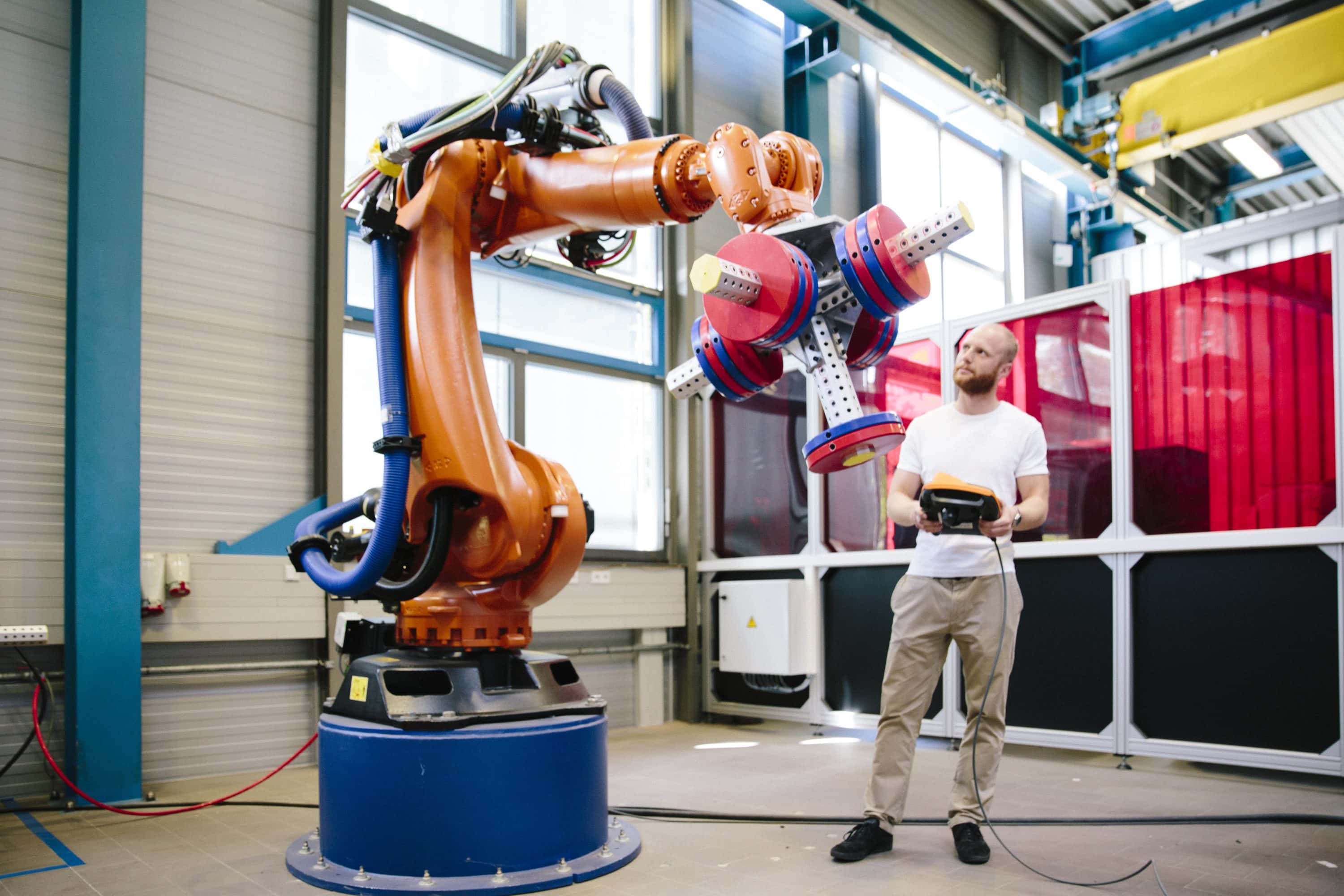
As collaborative robots transform Australian workplaces, new research has highlighted urgent regulatory gaps, offering practical guidance on worker protections.
Collaborative robots, or cobots, are rapidly reshaping the Australian workplace.
Once confined to science fiction, these machines now work alongside us, handling everything from heavy machinery to delicate surgical tasks.
However, this new era of automation raises critical questions about job security, safety and ethics.
Monash Business School Professor Herman Tse and his research team, Prof Helen De Cieri, Associate Professor Jun Gu, and Dr Tristan Casey have developed a framework and practical guidelines to help organisations navigate this complex terrain.
“The role of cobots in the workplace is poised to expand significantly, paving the way for innovation, collaboration, and transformative change,” Prof Tse said.
“However, as cobots become more prevalent, safety regulations and standards must evolve to address their unique challenges.”
The rise of the cobots
The global cobot market is booming, reaching a staggering US $50 billion since 2018.
Australia is set to ride this wave, fuelled by government investment in advanced manufacturing, and its commitment to building capability for economic benefit.
“This growth is being driven by increasing automation needs in sectors like manufacturing, automotive, electronics, healthcare, and food and beverages,” he said.
“Cobots enhance productivity and address labour shortages, making them attractive for both large and small businesses, and advancements in cobot technology will further boost their adoption in Australian workplaces.”
Prof Tse says the team predicts future cobots will be designed to be more intuitive so they can collaborate more effectively with humans.
“Advances in sensors, artificial intelligence, and machine learning will enable cobots to better interpret and respond to human actions and commands,” he said.
‘The general public is not ready’
While the potential benefits of cobots are clear, the emerging risks are equally significant, Prof Tse warns.
To date, research has largely focused on physical hazards such as collisions, while neglecting other critical issues.
A key insight from the team’s comprehensive study is that while cobots are often portrayed as a safe and reliable means to reduce workplace risk, they introduce new hazards such as job insecurity and distrust.
“The general public is not ready or prepared for the cobot era – there is a lack of awareness, fear of job loss, and concerns about safety and privacy,” he said.
“To improve public readiness, efforts should focus on education, addressing safety and ethical concerns, demonstrating the benefits of cobots, and ensuring the technology is safe, reliable, cost-effective, and human-centred.”
The regulatory challenge
The rapid evolution of cobot technology has outpaced Australian regulatory frameworks, Prof Tse warns.
His research found that while robots are mentioned in Australian Work Health and Safety regulations, the relevance of these legal provisions is questionable at best.
“To our knowledge, the various codes of practice and overarching guidelines produced by Safe Work Australia and regulatory jurisdictions are largely silent on the topic of collaborative robots,” he said.
Critical regulatory gaps identified in his study include outdated standards, limited guidance, insufficient enforcement mechanisms and inadequate training and resources.
“Addressing these gaps involves updating regulations, expanding Codes of Practice, including cobot-related incidents in safety reporting, enhancing international collaboration, improving training and resources, and strengthening enforcement and oversight,” he said.
Building trust and transparency
Successful cobot integration requires a human-centric approach prioritising safety, trust, and collaboration.
“Workforce consultation is paramount – engaging workers in the process helps manage psychosocial risks and identify potential hazards,” he said.
To build public trust, transparency is critical.
Ultimately, safe cobot integration will only be achieved through a collaborative effort between government, industry and workers.
“Developing a comprehensive, evidence-based WHS framework, alongside updated regulations and practical guidelines, is crucial for ensuring complete protection for workers involved in cobot operations,” he said.
The road ahead: A collaborative effort
Next, Prof Tse and his team hope to work closely with organisations to implement the framework and provide practical solutions.
They will conduct a sector-specific review to address issues like funding shortages and low safety commitment.
“Through this project, our goal was to identify the critical challenges and develop an evidence-based health and safety framework for introducing and implementing cobots in organisations,” he said.
“Our aim is to help these organisations adopt cobot systems that are safe, reliable, cost-effective, and sustainable, thereby transforming the future of work.”


